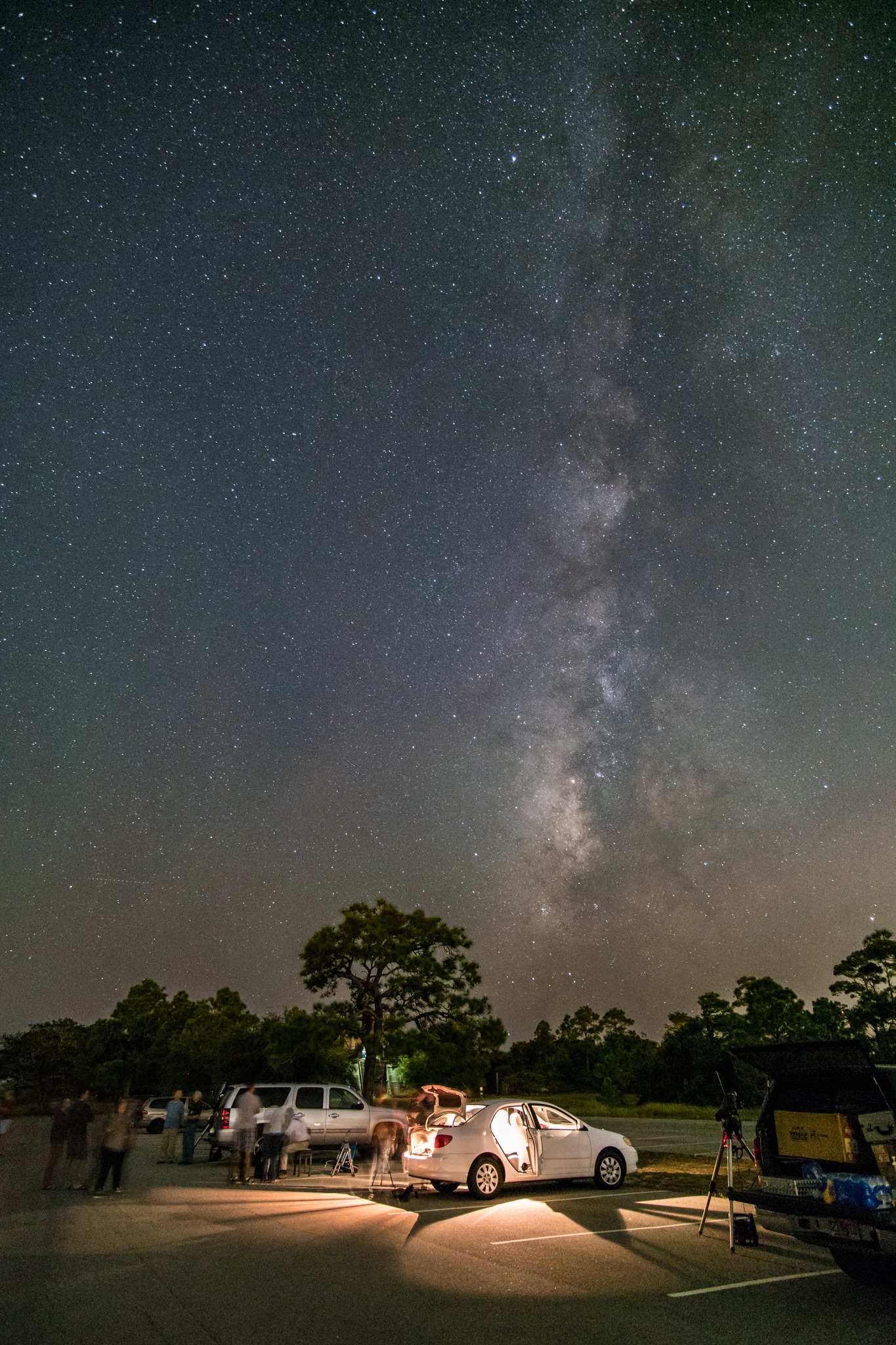By Becca Carlson

September 30 marked the 40th Anniversary of the partnership between The Escambia Amateur Astronomy Association (EAAA) and Gulf Islands National Seashore. The partnership gives students and community members a chance to look up and see the stars or other astral objects in one of Pensacola’s Dark Skies locations.
It was also the last Fort Pickens Gaze of the season. Among the sightings of the evening were satellites, shooting stars, Saturn with its rings, Messier 4 or M4, M6, M7, M13 globular and cluster galaxies as well as M31, also known as The Andromeda Galaxy. A pass by the International Space Station also took place while visitors were arriving.
Astronomical League liaison Dr. Wayne Wooten has been teaching astronomy at Pensacola State College since 1974. His career includes numerous accolades for his teaching and astronomical achievements. Wooten, along with EAAA members, has been actively engaged in stargazing and solar flare spotting around the area.
When it comes to solar flare spotting patience is the key. “You just have to play it by ear. You do not know even 30 minutes in advance,” said Wooten. “Or you can look and it will be quiet and then we get up there and, wow, here comes a flare that’s erupted in the last five minutes! You just don’t know.”
Although Pensacola has its fair share of light pollution, there are still some good places to go for stargazing. Along with Fort Pickens, there are also Dark Skies sites (designated areas of little to no immediate light pollution) in the Munson area as well as one located three parking lots to the east of Portofino.
“We have several observing sites in the Munson area that are great for meteor showers. It’s about as dark as it gets in the entire southeastern United States,” said Wooten.
The association includes many PSC students, alumni and community enthusiasts of all ages and backgrounds. Student membership is free; however, $15 includes a student membership for the year with perks including a monocular with a solar filter for viewing sun spots and the solar eclipse next August 22nd. Other perks include access to the Loaner Telescope Program.
Astrophotography is becoming more popular at these events. Digital SLR cameras are commonly used; however, with a mount attachment your iPhone may be all you need. “Wow, that’s the shattered remains of a star! That thing blew up, oh, 8,000 years ago,” Wooten said of a student photo. For more student and club member photo’s, check out the EAAA Facebook page at https://www.facebook.com/groups/80860174301/.
Although the season is winding down, there are still opportunities to go out and stargaze. On Saturday, October 22, EAAA will be at Big Lagoon State Park which is typically darker than Fort Pickens. A calendar of other events can be found at: http://www.gulfweb.net/rlwalker/astronomy/index.html








